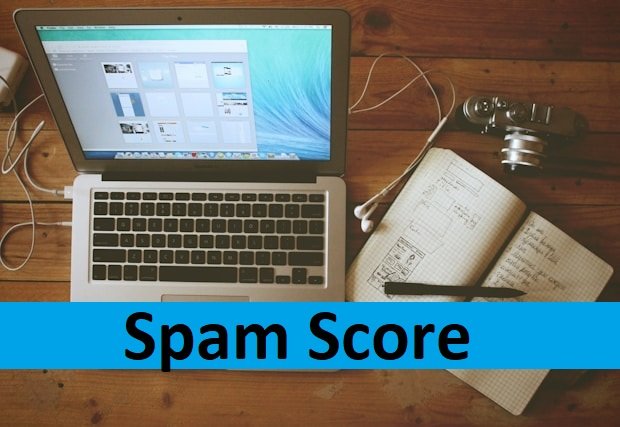
Spam score is a metric used to determine the likelihood of a website being flagged as spam by search engines. The score is based on a variety of factors, such as the quality of inbound links, the content of the website, and the frequency of updates. Websites with a high spam score are more likely to be penalized by search engines, which can lead to a decrease in search engine rankings and traffic.
The spam score metric is used by many SEO tools and services to help website owners identify potential issues with their website and take corrective action. By analyzing the factors that contribute to the spam score, website owners can identify areas where they need to improve their website and take steps to address these issues. Some common strategies for reducing spam score include removing low-quality inbound links, improving the quality of website content, and increasing the frequency of updates.
Understanding Spam Score
Definition and Significance
Spam score is a metric used to determine the likelihood of an email being marked as spam by email filters. It is a valuable tool for email marketers because it helps them identify potential issues with their emails that could trigger spam filters. A high spam score indicates a high probability of the email being spam, while a low spam score indicates a high likelihood of the email being legitimate.
The significance of spam score lies in its ability to help email marketers optimize their email campaigns. By monitoring their spam scores, email marketers can gain valuable insights into how their emails are being perceived by spam filters and recipients’ mailboxes. This allows them to adjust their email marketing strategy to ensure that their emails reach the intended audience.
Calculation Methodologies
Several methodologies are used to calculate spam scores, including Bayesian filtering, blocklists, DNS (Domain Name System), external programs, and online services. Each methodology uses a different set of criteria to determine the likelihood of an email being spam.
Bayesian filtering is a statistical approach that analyzes an email’s content to determine its spam score. It looks at the frequency of certain words and phrases in an email to determine whether it is spam or not.
Blocklists are lists of IP addresses and domains that are known to send spam. Email filters use these lists to identify and block emails from these sources.
DNS-based blacklists (DNSBLs) are similar to blocklists, but they use DNS to identify and block spam. DNSBLs use a database of known spam sources to block emails from those sources.
External programs and online services use a combination of the above methodologies to calculate spam scores. These programs and services analyze an email’s content and sender reputation to determine whether it is spam or not.
In conclusion, understanding spam score is crucial for email marketers who want to ensure that their emails reach their intended audience. By monitoring their spam scores and adjusting their email marketing strategy accordingly, they can optimize their email campaigns and improve their overall email deliverability.
Factors Influencing Spam Score
Spam score is a rating system that predicts the possibility of a subdomain being spammed on a website. It is a metric developed to gauge the quality and trustworthiness of a domain. In the context of SEO, a website’s spam score directly impacts its ranking potential. Search engines employ sophisticated algorithms to determine a website’s credibility. The scale of the spam score typically ranges from 0 to 17.
Email Content and Formatting
The content and formatting of an email can significantly influence its spam score. Email spam filters use a variety of techniques to identify spam, including analyzing the email’s content, structure, and formatting. The use of certain words or phrases, excessive use of capital letters, and poor grammar and spelling can all contribute to a high spam score.
Sender Reputation
The reputation of the sender can also play a role in the spam score. If the sender has a history of sending spam or engaging in other spam-related activities, their emails may be more likely to be flagged as spam. On the other hand, if the sender has a good reputation and has not been associated with spam in the past, their emails may be more likely to be delivered to the recipient’s inbox.
Recipient Interaction
The recipient’s interaction with the email can also influence the spam score. If the recipient marks the email as spam or deletes it without opening it, this can increase the email’s spam score. Conversely, if the recipient opens the email, clicks on links, or replies to the email, this can decrease the email’s spam score. Therefore, it is important to ensure that emails are relevant and engaging to the recipient to avoid being marked as spam.
Mitigating High Spam Scores
When an email campaign has a high spam score, it can be challenging to reach the intended audience. Fortunately, there are several best practices and technical solutions that can help mitigate high spam scores.
Best Practices for Email Campaigns
The following best practices can help reduce the likelihood of an email being flagged as spam:
- Avoid Spam Trigger Words: Certain words and phrases can trigger spam filters. Avoid using words such as “free,” “guaranteed,” and “act now.”
- Personalize the Email: Personalizing emails with the recipient’s name and other relevant information can increase engagement and reduce the likelihood of the email being marked as spam.
- Provide an Unsubscribe Link: Including an unsubscribe link in every email can help build trust with subscribers and reduce the likelihood of the email being marked as spam.
- Avoid Using All Caps and Excessive Punctuation: Using all caps and excessive punctuation can trigger spam filters. Use them sparingly and only when necessary.
Technical Solutions and Tools
The following technical solutions and tools can help reduce the likelihood of an email being flagged as spam:
- Authentication: Email authentication protocols such as SPF, DKIM, and DMARC can help verify an email’s authenticity and reduce the likelihood of it being marked as spam.
- Spam Filters: Spam filters can be used to automatically flag and quarantine emails that are likely to be spam. These filters can be configured to be more or less aggressive depending on the organization’s needs.
- Spam Score Checkers: Several online tools are available that can help organizations check the spam score of their emails before sending them. These tools can provide insight into what factors contribute to a high spam score and suggest ways to improve it.
By following best practices and utilizing technical solutions and tools, organizations can reduce the likelihood of their emails being marked as spam and improve the effectiveness of their email campaigns.
Frequently Asked Questions
How can I check the spam score of my emails?
To check the spam score of your emails, you can use various online tools such as Mail Tester, GlockApps, and SpamAssassin. These tools analyze your emails and give you a spam score based on various factors such as the subject line, sender address, content, and formatting. By checking the spam score of your emails, you can optimize them to improve deliverability and avoid being marked as spam.
What factors contribute to a higher email spam score?
Several factors contribute to a higher email spam score, including the use of spam trigger words, excessive use of capital letters and exclamation marks, lack of personalization, poor formatting, and suspicious links or attachments. To avoid a high spam score, it is best to follow email marketing best practices, such as using a clear and concise subject line, personalizing the email content, avoiding spam trigger words, and including an unsubscribe link.
How does Moz calculate its spam score for domains?
Moz calculates its spam score for domains based on various factors, including the quality and quantity of backlinks, the domain authority, the content quality, and the website structure. Moz uses a machine learning model to analyze these factors and give a spam score ranging from 0 to 17. A higher spam score indicates a higher risk of being penalized by search engines and lower search visibility.
What constitutes a good spam score in SEO practices?
A good spam score in SEO practices is typically between 0 and 2. A spam score of 3 to 5 is considered acceptable but may require further optimization, while a score above 5 indicates a high risk of being marked as spam and should be avoided. However, it is important to note that spam score is just one of many factors that affect search engine ranking, and it should be used in conjunction with other SEO metrics.
How can spam scores affect email deliverability?
Spam scores can affect email deliverability by increasing the likelihood of emails being marked as spam and filtered out by email providers. When emails have a high spam score, they may not reach the recipient’s inbox, resulting in lower open and click-through rates and reduced engagement. To avoid this, it is important to optimize your emails and maintain a low spam score.
What are the best practices to reduce a website’s spam score?
To reduce a website’s spam score, you can follow several best practices, including removing low-quality backlinks, optimizing content quality and structure, avoiding spam trigger words, and improving website security. It is also important to monitor your website’s spam score regularly and take corrective actions as needed to maintain a low score. By following these best practices, you can improve your website’s search visibility and avoid penalties from search engines.




